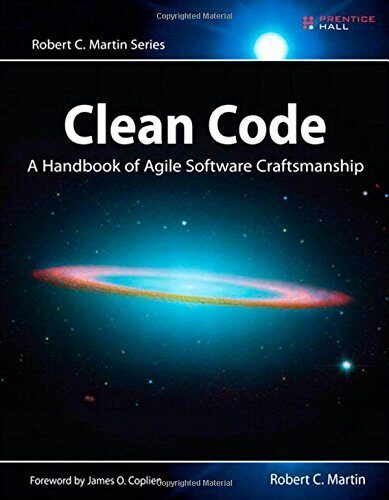
Introduction:
Introduction
In Clean Code: A Handbook of Agile Software Craftsmanship, Robert C. Martin, also known as “Uncle Bob,” presents a comprehensive guide to writing clean, maintainable, and efficient code. As a veteran software engineer and consultant, Martin draws upon his extensive experience to provide practical advice and principles for developers at all levels. The book serves as a manifesto for the software craftsmanship movement, emphasizing the importance of professionalism, discipline, and pride in one’s work. Through a combination of real-world examples, case studies, and thought-provoking discussions, Martin challenges readers to rethink their approach to coding and strive for excellence in their craft.
Summary
The central premise of Clean Code is that code is clean if it can be easily understood and modified by any developer, not just its original author. Martin argues that clean code is essential for the long-term success and maintainability of software projects, as it enables teams to work together efficiently and adapt to changing requirements. He outlines a set of principles and best practices that, when applied consistently, can help programmers write code that is readable, flexible, and bug-free.
Key Principles and Practices
- Follow standard conventions: Martin emphasizes the importance of adhering to established coding conventions and best practices within a team or organization. This ensures consistency and makes the code easier to understand and maintain.
- Keep it simple: The book stresses the importance of simplicity in coding. Martin advocates for reducing complexity wherever possible and following the KISS (Keep It Simple, Stupid) principle. He encourages developers to break down complex problems into smaller, manageable pieces and to avoid over-engineering solutions.
- Write tests: Martin emphasizes the crucial role of testing in writing clean code. He argues that tests not only ensure the correctness of the code but also serve as documentation and enable refactoring. The book provides guidance on writing effective unit tests and test-driven development (TDD).
- Refactor mercilessly: Martin encourages developers to continuously refactor their code to improve its structure, readability, and maintainability. He presents various refactoring techniques and patterns, such as Extract Method, Inline Method, and Replace Temp with Query.
- Avoid duplication: The book emphasizes the importance of avoiding duplication in code, as it can lead to increased complexity, maintenance overhead, and potential inconsistencies. Martin introduces the DRY (Don’t Repeat Yourself) principle and provides strategies for identifying and eliminating duplication.
- Write expressive code: Martin emphasizes the importance of choosing clear, descriptive names for variables, functions, and classes. He argues that well-named entities can significantly improve the readability and understandability of code, reducing the need for comments.
Case Studies and Examples
Throughout the book, Martin presents real-world examples and case studies to illustrate the principles of clean code. He analyzes the code of popular open-source projects, such as JUnit and FitNesse, and demonstrates how they adhere to (or deviate from) the principles outlined in the book. These examples serve as valuable learning resources for readers, allowing them to apply the concepts to actual codebases.
Main Characters and Events
While Clean Code does not feature traditional characters, it is shaped by the experiences and insights of its author, Robert C. Martin. Martin’s journey as a software engineer and consultant provides the foundation for the book’s principles and practices. The book also references the work of other influential figures in the software development community, such as Kent Beck, Martin Fowler, and Erich Gamma.
Key events discussed in the book include:
- The rise of Agile methodologies: Martin explores how the principles of Agile software development, such as iterative planning, continuous integration, and customer collaboration, align with the concept of clean code.
- The evolution of programming languages and paradigms: The book examines how the choice of programming language and paradigm (e.g., object-oriented, functional) can impact code cleanliness and maintainability.
- The increasing importance of software craftsmanship: Martin discusses the growing emphasis on professionalism, discipline, and pride in software development, as evidenced by the software craftsmanship movement.
Conclusion
Clean Code is a seminal work in the field of software engineering, providing a comprehensive guide to writing clean, maintainable, and efficient code. Robert C. Martin’s principles and practices have influenced generations of developers and continue to be relevant in today’s fast-paced, technology-driven world. The book serves as a call to action for programmers to take pride in their craft and strive for excellence in their work. By applying the concepts outlined in Clean Code, developers can create software that is easier to understand, modify, and extend, ultimately leading to more successful and sustainable projects. The book’s emphasis on professionalism, discipline, and continuous improvement encourages readers to adopt a growth mindset and continuously hone their skills as software engineers.
Read Full Novel Here
Clean Code: A Handbook of Agile Software Craftsmanship by Robert C. Martin

